Mental health concerns are complex and often intertwined. Among the commonly misunderstood and frequently conflated conditions are social anxiety and agoraphobia. While both can lead to avoidance behaviors and significant discomfort, they are distinct disorders with specific characteristics. Understanding the differences can aid in seeking appropriate treatment and support.
What is Social Anxiety Disorder?
Social anxiety disorder (also known as social phobia) is characterized by a significant fear of social situations where one might be judged, negatively evaluated, or humiliated. This anxiety can manifest in various settings, including:
- Public Speaking: A major trigger for many with social anxiety.
- Meeting New People: Fear of judgment can make initial interactions daunting.
- Everyday Interactions: Even routine conversations can become sources of intense worry.
Symptoms of Social Anxiety Disorder
- Intense fear of social situations
- Avoidance of social interactions
- Excessive worry about being embarrassed or rejected
- Physical symptoms such as sweating, trembling, or nausea
- Self-consciousness about one’s appearance or actions
What is Agoraphobia?
Agoraphobia is an anxiety disorder characterized by a fear of situations where escape might be difficult or help unavailable in the event of a panic attack or other incapacitating symptoms. People with agoraphobia often avoid places or situations that might trigger these feelings, leading to significant limitations in daily functioning.
Common Triggers of Agoraphobia
- Crowded Places: Malls, concerts, or public transportation.
- Open Spaces: Parks or parking lots.
- Enclosed Spaces: Elevators or small rooms.
- Being Alone Outside the Home: Fear of being helpless without support.
Symptoms of Agoraphobia
- Severe anxiety in places where escape is perceived as difficult
- Avoidance of triggering situations or locations
- Dependence on a companion for outings
- Experiencing panic attacks in feared situations
- Physical symptoms such as dizziness, heart palpitations, or gastrointestinal discomfort
Key Differences Between Social Anxiety and Agoraphobia
Understanding the nuances between these disorders can be challenging, but several distinguishing factors can help clarify the differentiation.
Focus of Fear
- Social Anxiety: Fear centers around social interactions and the potential for judgment or embarrassment.
- Agoraphobia: Fear is related to being in environments where escape may be difficult or help unavailable during a panic episode or similar distress.
Situational Triggers
- Social Anxiety: Triggered by social situations such as meetings, parties, or public speaking.
- Agoraphobia: Triggered by specific environments such as crowded places, open spaces, or being away from home without support.
Behavioral Responses
- Social Anxiety: Includes avoiding social settings, excessive worry about social performance, and seeking reassurance about social interactions.
- Agoraphobia: Includes avoiding specific locations, reliance on a companion, and significant changes in lifestyle to prevent encountering feared situations.
The Overlapping Symptoms
While social anxiety and agoraphobia have distinct core fears and triggers, they can share overlapping symptoms, which makes differentiation challenging. One notable similarity is the occurrence of panic attacks. Both disorders may involve panic symptoms, but the specific triggers for these symptoms can vary significantly between the two conditions.
Avoidance behaviors are another commonality between social anxiety and agoraphobia. Individuals with either disorder may engage in avoidance, but the situations or experiences they avoid can differ. For example, someone with social anxiety might steer clear of social gatherings, while a person with agoraphobia might avoid leaving their home altogether.
Physical symptoms can also manifest in both conditions. Individuals experiencing anxiety in social situations or outside their home may experience symptoms such as sweating, trembling, or feeling faint. These physical responses can contribute to the overall experience of anxiety, further complicating the differentiation between social anxiety and agoraphobia.
Self-Reflection Questions to Differentiate
Considering the following questions can offer insights into whether you might be dealing with social anxiety or agoraphobia:
- Are you primarily anxious about interacting with others or being judged? If yes, this suggests social anxiety.
- Do you avoid certain places because of fear you might not be able to escape or receive help in case of panic? If yes, this points more towards agoraphobia.
- Do you rely on someone to be with you to feel safe outside your home? This is more indicative of agoraphobia.
- Do routine social interactions (like talking to a store clerk) cause you significant distress? This is more indicative of social anxiety.
Seeking Professional Help
Both social anxiety disorder and agoraphobia can be debilitating, but they are also treatable with the right interventions. Professional mental health support can make a significant difference in managing symptoms and improving quality of life. Therapies such as Cognitive Behavioral Therapy (CBT), exposure therapy, and medication are effective treatments for both disorders.
Differentiating between social anxiety disorder and agoraphobia is crucial for seeking appropriate treatment and improving mental health. While both involve significant anxiety, their triggers and primary fears are distinct. Social anxiety centers on fear of social judgment, while agoraphobia involves fear of places where escape or help might be difficult.
Overcome Social Anxiety with Resilience Behavioral Health
Is social anxiety impacting your daily life? Don’t let it control your interactions and experiences. At Resilience Behavioral Health in Boston, we offer a comprehensive social anxiety treatment program designed to help you manage your symptoms and regain confidence. Take the first step towards better mental health by visiting our website or contacting us today. Let us support you on your journey to overcoming social anxiety and living a fulfilling life.

